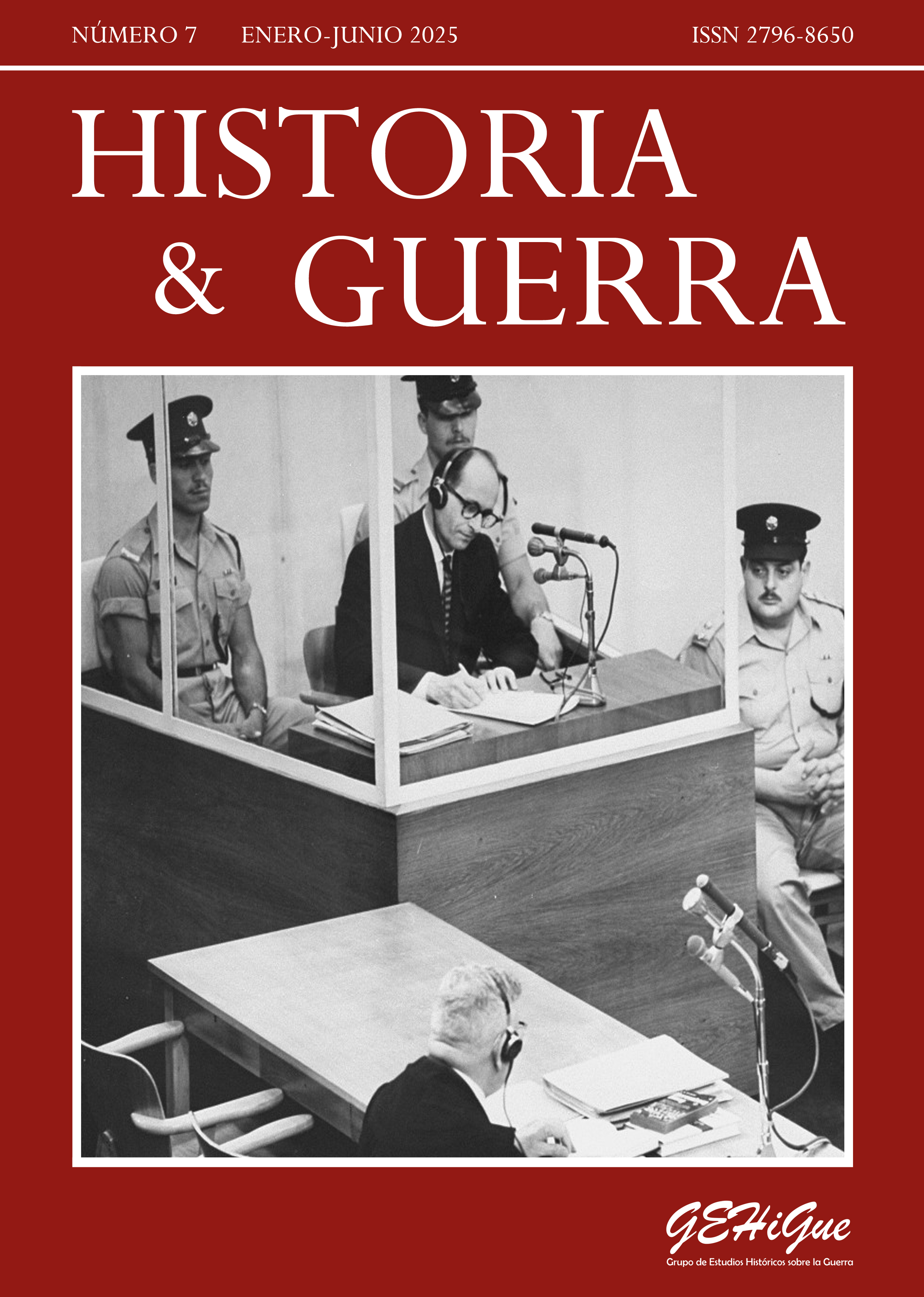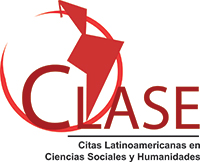Guardians of the oficial narrative? Sketches of a literature of veterans of the war in Bosnia-Herzegovina (1992-1995) from publications by members of the ARBiH Fifth Corps
Abstract
In Bosnia-Herzegovina, three incompatible with each other official narratives about the last war (1992-1995) can be identified, which are supported by political-institutional projects with different ideas about what the country should be. However, they have one thing in common: the hierarchical role assigned to the war veterans. Although a large number of ex-combatants have written books and articles on the conflict, literature has neglected the possibilities offered by a systematic analysis of them, especially with regard to their links with the official narratives. Focusing on the so-called intra-Bosniak conflict because of the tensions it presents to one of those narratives, this article aims to explore the aforementioned by resorting to three books written by members of the Fifth Corps of the Army of the Republic of Bosnia and Herzegovina (which took part in these conflicts).Downloads
References
Alcalde, A. (2018). Historias del retorno: la historiografía internacional sobre veteranos de guerra. Ayer, 111(3), 109-131.
Andjelić, N. (2003). Bosnia-Herzegovina. The end of a legacy. Frank Cass.
Andreas, P. (2008). Blue Helmets and Black Markets. The Business of Survival in the Siege of Sarajevo. Cornell University Press.
Arnautović, S. (1996): Izbori u Bosni i Hercegovini ’90. Analiza izbornog procesa. Promocult.
Ashplant, T. G., Dawson, G. & Roper M. (2000). The politics of war memory and commemoration: contexts, structures and dynamics en T. G. Ashplant, G. Dawson & M. Roper (eds.), The Politics of War Memory and Commemoration (pp. 3-85). Routledge.
Assmann, A. (2008). Canon and Archive en A. Erl & A. Nünning (eds.), Cultural Memory Studies. An International and Interdisciplinary Handbook (pp. 97-107). Walter de Gruyter.
Bădescu, G. (2019). Between Repair and Humiliation. Religious Buildings, Memorials, and Identity Politics in Post-war Sarajevo. Journal of Religion & Society, 19, 19-37.
Barić, N. (2005): Srpska pobuna u Hrvatskoj 1990-1995. Golden Marketing.
Barić, N. (2011). Bihaćko-cazinska krajina u političkim i vojnim planovima Hrvatske i Srbije 1992.-1995. Bošnjačka pismohrana, 10 (32-33), 393-449.
Barton Hronešová, J. (2021). Ethnopopulist denial and crime relativisation in Bosnian Republika Srpska. East European Politics, 38 (1), 21-42.
Begić, M. (2013). U opsadi 1201 dan. Sigurna zona UN-a Bihać. Institut za Istraživanje Zločina Protiv Čovječnosti i Međunarodnog Prava.
Begić, M. (2021). Nastanak i djelovanje Autonomne pokrajine Zapadna Bosna. Institut za Istraživanje Zločina Protiv Čovječnosti i Međunarodnog Prava.
Bernhard, M. & Kubik, J. (2014). A Theory of the Politics of Memory en M. Bernhard & J. Kubik, (eds.), Twenty Years After Communism, The Politics of Memory and Commemoration (pp. 7-34). Oxford University Press.
Bevernage, B. & Wouters, N. (2018). State-Sponsored History After 1945: An Introduction en B. Bevernage & N. Wouters (eds.), The Palgrave Handbook of State-Sponsored History After 1945 (pp. 1-36). Palgrave Macmillan.
Bianchi, M. (2021). ‘Nothing Much Has Happened Here’: Memory, Denial, and Identity Among Postwar Youth in Republika Srpska. Cultural Analysis, 19(1), 49-71.
Bougarel, X. (1996). Bosnie, anatomie d’un conflit. La Découverte.
Bougarel, X. (2006). The Shadow of Heroes: Former Combatants in Post-War Bosnia-Herzegovina. International Social Science Journal, 58(189), 479-490.
Bougarel, X. (2007). Death and the Nationalist: Martyrdom, War Memory and Veteran Identity among Bosnian Muslims en X. Bougarel, E. Helms & G. Duijzings (eds.), The New Bosnian Mosaic. Identities, Memories and Moral Claims in a Post-War Society (pp. 167-192). Ashgate.
Bougarel, X. (2015). Survivre aux empires. Islam, identité nationale et allégeances politiques en Bosnie-Herzégovine. Karthala.
Bourdieu, P. (1993). Esprits d’Etat. Genèse et structure du champ bureaucratique. Actes de la recherche en sciences sociales, 96-97, 49-62.
Bourdieu, P. (2014). Sobre el Estado. Cursos en el Collège de France (1989-1992). Anagrama.
Burg, S., & Shoup, P. (2000). The war in Bosnia-Herzegovina. Ethnic conflict and international intervention. M.E. Sharp.
Calic, M. J. (2009). Ethnic cleansing and War Crimes, 1991-1995 en C. Ingrao & T. A. Emmert (eds.), Confronting the Yugoslav Controversies. A scholars’ initiative (pp. 114-151). Purdue University Press.
Čekić, S. (2012). Genocid i istina o genocidu u Bosni i Hercegovini. Institut za Istraživanje Zločina Protiv Čovječnosti i Međunarodnog Prava.
Christia, F. (2008). Following the money. Muslim versus Muslim in Bosnia’s Civil War. Comparative Politics, 40(4), 461-480.
Čolović, I. (2000). Bordel ratnika. XX vek.
Dedović, M. (2024). The Memoirs of ARBiH Generals: The Scope of Memoir Literature for Understanding the Military History of Sarajevo Between 1992-1995. Journal of Balkan Studies, 4(1), 83-92.
Dekić, S., Somun-Krupalija, L. & Zulić Šiljak, S. (2017). Kultura sjećanja i zaborava na rat u Velikoj Kladuši en N. N. Čengić & T. Šmidling (eds.), Kultura sjećanja u lokalnim zajednicama u Bosni i Hercegovini. Fondacija Mirovna akademija.
Dreković, R. (2004). U obruču: Krajišnici i Hercegovci u borbi na dva fronta. Dom stampe.
Dwyer, P. (2018). Making Sense of the Muddle: War Memoirs and the Culture of Remembering en P. Dwyer (ed.), War Stories. The War Memoir in History and Literature (pp. 1-26). Berghahn.
Felić, B. (2002). Peti korpus (1992-1995). Ljiljan.
Figal, M. (2023). Como muestra bastan tres monumentos. Un abordaje desde Brčko a los usos y la institucionalización de las narrativas de la guerra en Bosnia-Herzegovina. Conflicto social, 15(28), 172-212.
Franović, I. (2016). Remembrance and Reconciliation. Research on Monuments from the War in Bosnia and Herzegovina en I. Franović & N. Vukosavljević (Eds.), War of memories: Places of suffering and remembrance of war in Bosnia-Herzegovina (pp. 204-229). Centar za nenasilnu akciju.
Gačanica, L. (2023). Bosnia and Herzegovina: Three decades of facing the past. Perspectives, 10, 20-22.
Grandits, H. (2007). The Power of ‘Armchair Politicians’: Ethnic Loyalty and Political Factionalism among Herzegovinian Croats en X. Bougarel, E. Helms & G. Duijzings (eds.), The New Bosnian Mosaic. Identities, Memories and Moral Claims in a Post-War Society (pp. 101-122). Ashgate.
Greig, M. (2021). Dead Men Telling Tales. Napoleonic War Veterans and the Military Memoir Industry, 1808-1914. Oxford University Press.
Harari, Y. N. (2007). Military Memoirs: A Historical Overview of the Genre from the Middle Ages to the Late Modern Era. War in History, 14(3), 289-309.
Hasić, J. (2012). The politics of memory in Cazinska Krajina. Case study of “Autonomous Province of Western Bosnia” [Tesis de maestría]. Central European University.
Hewitson, M. (2010). ‘I Witnesses’: Soldiers, Selfhood and Testimony in Modern Wars. German History, 28(3), 310-325.
Hoare, M. A. (2004). How Bosnia Armed. Saqi Books.
Hronešová, J. (2016). Might Makes Right: War-Related Payments in Bosnia and Herzegovina. Journal of Intervention and Statebuilding, 10(3), 339-360.
Ibrahimagić, O. (2011). Politički i ustavno-pravni aspekti secesije paradržavne tvorevine “AP Zapadna Bosna” en M. Kreso & S. Rizvanović (eds.), Zločini u Bosanskoj Krajini za vrijeme agresije na Republiku Bosnu i Hercegovinu 1991-1995. (pp. 212-227). Institut za Istraživanje Zločina Protiv Čovječnosti i Međunarodnog Prava.
Imamović, M. (1997). Agresija na Bosnu i Hercegovinu i njene neposredne posljedice en M. Imamović (ed.), Agresija na Bosnu i Hercegovinu i borba za njen opstanak: 1992-1995 godine (pp. 9-19). Pravni fakultet Univerziteta u Sarajevu.
Izetbegović, A. (1995). Odabrani govori, pisma, izjave, intervjui: 1993-1994. Prvo muslimansko dionicko drustvo.
Jansen, S. (2007). Remembering with a Difference: Clashing Memories of Bosnian Conflict in Everyday Life en X. Bougarel, E. Helms & G. Duijzings (eds.), The New Bosnian Mosaic. Identities, Memories and Moral Claims in a Post-War Society (pp. 193-208). Ashgate.
Jelin, E. (2002): Los trabajos de la memoria. Siglo XXI.
Kennedy, C. (2013). Narratives of the Revolutionary and Napoleonic Wars. Military and Civilian Experience in Britain and Ireland. Palgrave Macmillan.
Kličić, S. (2011). Međubošnjački sukob u Cazinskoj krajini. Bošnjačka pismohrana, 10(32-33), 450-459.
Kržišnik-Bukić, V. (1991). Cazinska buna 1950. Svjetlost.
Moll, N. (2013). Fragmented memories in a fragmented country: memory competition and political identity-building in today’s Bosnia and Herzegovina. Nationalities Papers, 41(6), 910-935.
Moll, N. (2015). “Sarajevska najpoznatija javna tajna”: suočavanje sa Cacom, Kazanima i zločinima počinijenim nad Srbina u opkoljenom Sarajevu, od rata do 2015. Friedrich Ebert Stiftung.
Mosse, G. (1990). Fallen Soldiers. Reshaping the Memory of the World Wars. Oxford University Press.
Mulaosmanović, A. (2008). O političkom kontekstu “Afere Agrokomerc” – utjecaji na razvoj tvornice u svjetlu odbrambenog koncepta SFRJ. Historijska traganja, 1, 181-212.
Mulaosmanović, A. (2009). Nacionalni identitet u kontekstu izraženog regionalnog identiteta i političkih potresa u Bihaćkoj krajini en H. Kamberović (ed.), Rasprave o nacionalnom identitetu Bošnjaka. (pp. 137-152). Institut za istoriju u Sarajevu.
Mulaosmanović, A. (2010). Bihaćka Krajina: 1971.-1991. (utjecaj politike i političkih elita na privredni razvoj). Institut za istoriju.
Mulaosmanović, A. (2012). Nastanak Autonomne pokrajine Zapadna Bosna. Historijska traganja, 9, 87-104.
Muslimović, F. (2011). Sadržaj genocidne agresije prema prostoru Bosanske krajine 1991-1995 en M. Kreso & S. Rizvanović (Eds.), Zločini u Bosanskoj Krajini za vrijeme agresije na Republiku Bosnu i Hercegovinu 1991-1995. (pp. 241-257). Institut za istraživanje zločina protiv čovječnosti i međunarodnog prava.
Obradović, N. (2017). War Veteran’s Policy in Bosnia and Herzegovina. Revija za socijalnu politiku, 21(1), 93-106.
Obradović, N. & Filic, G. (2019). Inequality and Welfare State Clientelism in Bosnia and Herzegovina. Economic Annals, LXIV (223), 83-104.
Palmberger, M. (2016). How Generations Remember. Conflicting Histories and Shared Memories in Post-War Bosnia and Herzegovina. Palgrave Macmillan.
Pašić, J. (2020). Historiografska literature i izvori o Bihaćkoj krajini u dvadesetom vijeku, objavljeni od 2000. do 2017 en Dž. Juzbašić & Z. Šehić (eds.), Prilozi o historiografiji Bosne i Hercegovine (2001-2017). 2. Akademija nauka i umjetnosti Bosne i Hercegovine.
Petrović, V. (2018). The ICTY Library: War Criminals as Authors, Their Works as Sources. International Criminal Justice Review, 28(4), 333–348.
Raguž, J. (2011). Operacija “Mač-1” – primjer vođenja specijalnog rata “Srpske vojske krajine” protiv Cazinske krajine 1995. godine. Bošnjačka pismohrana, 10(32-33), 460-508.
Rawski, T. (2021). The Persistence of National Victimhood: Bosniak Post-War Memory Politics of the Srebrenica Mass Killings. Sprawy Narodowościowe: Seria nowa, 53.
Sasso, A. (2015). ‘Just a few years left for us’. Non-nationalist political actors in Bosnia-Herzegovina (1989-1991) [Tesis de doctorado]. Universitat Autònoma de Barcelona.
Sokol, A. (2014). War Monuments: Instruments of Nation-building in Bosnia and Herzegovina. Croatian Political Science Review, 51(5), 105-126.
Šahinović-Kedić, L. (2021). Društveno-političke nestabilnosti u Cazinskoj krajini u periodu od života Hasan-age Pećkog do pada Autonomne pokrajine Zapadna Bosna 1995. godine [Tesis de maestría]. Universidad de Sarajevo.
Tokača, M. (2012). Bosanska knjiga mrtvih: ljudski gubici u Bosni i Hercegovini 1991-1995. Istraživačko dokumentacioni centar.
Žanić, I. (1998). Prevarena povijest. Guslarska estrada, kult hajduka i rat u Hrvatskoj i Bosni i Hercegovini 1990-1995. godine. Durieux.
Copyright (c) 2025 Matías Figal

This work is licensed under a Creative Commons Attribution-NonCommercial 4.0 International License.

Historia & Guerra uses an international license Attribution-NonCommercial 4.0 International (CC BY-NC 4.0).
You are free to:
- Share — copy and redistribute the material in any medium or format.
- Adapt — remix, transform, and build upon the material.
- The licensor cannot revoke these freedoms as long as you follow the license terms..
Under the following terms:
Attribution — You must give appropriate credit, provide a link to the license, and indicate if changes were made. You may do so in any reasonable manner, but not in any way that suggests the licensor endorses you or your use.
NonCommercial — You may not use the material for commercial purposes.
No additional restrictions — You may not apply legal terms or technological measures that legally restrict others from doing anything the license permits.
Notices:
You do not have to comply with the license for elements of the material in the public domain or where your use is permitted by an applicable exception or limitation.
No warranties are given. The license may not give you all of the permissions necessary for your intended use. For example, other rights such as publicity, privacy, or moral rights may limit how you use the material.
The author retains all rights to his work without restriction and grants Historia & Guerra the right to be the first publication of the work. Likewise, the author may establish additional agreements for the non-exclusive distribution of the version of the work published in the Journal (for example, placing it in an institutional repository or publishing it in a book), with the acknowledgment of having been first published in this journal. Use of the work for commercial purposes is not permitted.














.jpg)















